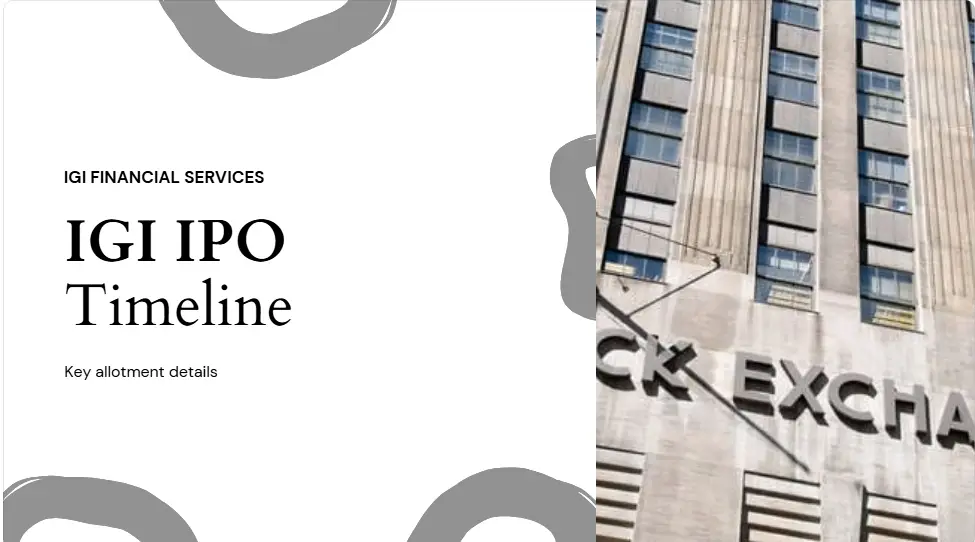What Is Boeing PE Ratio? A Complete Investor Guide
The Price-to-Earnings (PE) Ratio is one of the most widely used valuation metrics in the financial world. It allows investors to assess how much the market is willing to pay today for a dollar of Boeing's earnings. For a company like Boeing Co. (NYSE: BA), which operates in the complex and capital-intensive sectors of aerospace, defense, and space exploration, the PE ratio brings insights into investor expectations, future earnings potential, and market sentiment.
✅ What Exactly Is the PE Ratio?
Understanding the PE ratio begins with its formula and significance:
🟩 PE Ratio Formula
PE Ratio = Share Price ÷ Earnings Per Share (EPS)
🟩 Basic Meaning
A high PE ratio generally reflects investor optimism indicating they expect higher future earnings growth. A low PE ratio may suggest undervaluation, skepticism about growth, or earnings decline.
🟩 Example In Boeing Case
Suppose Boeing's stock price is $220 and its EPS is $5. Accordingly: PE Ratio = 220 / 5 = 44. This means investors are willing to pay $44 for every dollar of Boeing's earnings.
✅ Why It Matters for Boeing Investors
For a cyclical, innovative giant like Boeing, the PE ratio is a useful valuation tool and a window into:
- Earnings Stability: A stable or growing PE ratio often reflects how well the company has navigated hurdles like production delays or regulatory issues.
- Market Confidence: During crises, the PE ratio often skyrockets as EPS collapses. This can reflect investor belief in a strong future comeback.
- Relative Valuation: Investors compare Boeing's PE with rivals like Airbus, Lockheed Martin, and Raytheon to judge if it is over or undervalued.
✅ Types of PE Ratios Used for Boeing
| 📘 Type | 📊 Meaning | ✈️ Boeing's Relevance |
|---|---|---|
| Trailing PE | Uses last 12 months' earnings | Most common and reflects real, historical data |
| Forward PE | Based on projected earnings | Critical for Boeing's recovery or future aircraft orders |
| Shiller PE (CAPE) | Based on 10-year average earnings, adjusted for inflation | Useful in long-term macroeconomic and industry-cycle analysis |
Note: For Boeing, the forward PE tends to be examined more than the trailing one, especially during years of weak or negative earnings.
Boeing (BA) PE Ratio Today: June 2025 Update
Boeing Co. (NYSE: BA) was worth just shy of $200.3 a share in mid-June 2025. This makes for a disheveled view of the company's price-to-earnings (PE) ratio, a key metric investors use to measure valuation.
🔍 Current PE Snapshot: Mixed Package
🟥 1. Trailing Twelve-Month (TTM) PE Ratio: Around –11.3× (Negative)
Boeing recorded a net loss over the last year, with negative EPS values between –$17.77 and –$17.92. This creates a negative PE ratio of –11.3× at a stock price of ~$200. A negative PE indicates the company is not currently profitable, making TTM PE an unreliable measure.
🛑 Investor Interest: Negative PE is not uncommon for Boeing during downturns. It signals past weakness, not necessarily future potential.
🟩 2. Forward PE Ratio: Roughly 36.9×
As takings are projected to improve, consensus analyst forecasts suggest Boeing will turn profitable again within 12 months. These projected earnings yield a forward PE ratio of around 36.9×.
🟢 Investor Help: A high forward PE shows the market is pricing in a solid comeback, driven by increased aircraft deliveries, defense contracts, and supply chain improvements.
Also Read: Google (Alphabet) PE Ratio 2025: Historical Chart, TTM
💡 What Does It Mean for Investors?
Understanding Boeing's PE in June 2025 requires nuance:
- Positive Implications: A forward PE of 36.9× suggests strong investor confidence in Boeing's future earnings.
- Cautionary Signals: The negative trailing PE shows Boeing hasn't fully recovered. The forward valuation is high against historical averages, meaning much optimism is already priced in.
| Metric | Value (June 2025) | Insight |
|---|---|---|
| Stock Price | ~$200.35 | Steady, mild recovery |
| Trailing PE | –11.3× | No profit in the past 12 months |
| Forward PE | 36.9× | High expectations for recovery |
| Historical Average PE | ~23× | Current forward PE is above the long-term norm |
Historical Boeing PE Ratio Trends (2010–2025) Exposed
Boeing's Price-Earnings ratio experienced infamous ups and downs over the past 15 years, paralleling an era of innovation, turmoil, and major industry turning points. Let's break down the historical PE trends from 2010 to 2025.
🕰️ PE Ratio Timeline: 2010 to 2025
📈 Three Distinct Phases in Boeing's PE Journey
- 🟢 Phase One: Growth & Stability (2010–2018): Characterized by notable earnings growth and constant demand, PE ratios were stable between 14x and 26x, reflecting strong investor confidence.
- 🟠 Phase Two: Crisis & Collapse (2019–2021): The 737 MAX crisis and COVID-19 pandemic led to massive losses, pushing the PE ratio to spike above 50x before turning negative for two consecutive years.
- 🟢 Phase Three: Recovery & Realignment (2022–2025): Forward PEs became the focus. By 2025, Boeing trades at a high forward PE (~36.9×) based on recovery optimism, while the trailing PE remains negative.
Investor Insights from PE Trends
- ✅ PE ratios are driven by a company's ability to sustain profitability.
- ✅ Boeing's negative PE during downturns is not rare for cyclical firms. More telling is how fast forward PE adjusts to sentiment.
- ✅ The pre-crisis historical average PE (2010-2018) of around 18-22× serves as a healthy baseline for comparison.
How Does Boeing's Earnings Influence Its PE Ratio So Severely
Boeing's PE ratio is highly reactive to changes in its earnings. The cyclical nature of its business, combined with high fixed costs, leads to dramatic swings that investors must understand.
💼 1. A Peak-and-Trough Business
Revenue generation depends on global aircraft demand and defense budgets. Earnings can grow rapidly during peaks but can collapse just as quickly during crises like the COVID-19 pandemic or the 737 MAX grounding.
🧾 2. Sky-high Costs Create Volatile Profits
Boeing has massive fixed costs for R&D, manufacturing, and compliance. During a delivery freeze, these costs can quickly turn profits into losses, causing extreme PE ratio volatility.
💹 3. Falling Earnings = Artificially High PE
In 2019, as EPS collapsed due to the 737 MAX grounding, the stock price remained steady for months. This caused the PE ratio to spike, making the company appear "expensive" due to plunging earnings, not a rallying stock price.
Also Read: Stock Market Holidays in June 2025: US & India Trading Schedule
🔮 4. Forward PE Reflects Hope, Not Results
When trailing EPS is negative, investors focus on forward PE. For Boeing, the forward PE can remain high during recovery periods as the market prices in future growth potential well before it appears in financial results.
⚠️ 5. One-Time Shocks Distort Annual EPS
A single event like an airplane grounding, lawsuits, or a pandemic can wipe out an entire year of profit, making the TTM PE for that year unreliable or misleading.
💡 Takeaway for Investors
Boeing’s PE ratio is highly reactive. Investors must prioritize forward PE during recovery, alongside analysis of cash flow, order book strength, and industry signals, rather than relying solely on traditional PE metrics like the EV/EBITDA ratio.
Boeing vs. Industry PE Ratio: Who's Undervalued?
Comparing Boeing's PE ratio with those of the broader aerospace and defense industry is a crucial assessment. This relative analysis helps investors decide if Boeing is undervalued, overvalued, or fairly priced compared to its peers.
PE Ratio Comparison Table (As On June 2025)
| Company / Index | Trailing PE Ratio | Forward PE Ratio | Core Business Focus |
|---|---|---|---|
| Boeing (BA) | –11× (Negative) | 36.9× | Commercial aircraft, defense, and space |
| Airbus SE (EADSY) | 28× | 24× | Commercial aircraft (A320 series), space, and helicopters |
| Raytheon (RTX) | 22× | 20× | Aerospace systems, defense tech, missile systems |
| Lockheed Martin (LMT) | 17× | 16× | Military aircraft (F-35), defense electronics |
| General Dynamics (GD) | 19× | 17× | Military vehicles, submarines, aerospace (Gulfstream) |
| Industry Average | ~21× | ~22× | Composite of commercial & defense |
Peer Forward PE Comparison (June 2025)
📘 Is Boeing Undervalued or Overvalued?
- Overvalued (Forward PE View): Boeing's forward PE of 36.9x is well above the industry norm (~22x), implying rich expectations are priced in.
- Fairly Valued (Contextual View): If Boeing meets its aggressive earnings growth targets, its high valuation may be justified by its potential.
- Undervalued (Long-Term Turnaround View): If the recovery accelerates and margins return to pre-crisis levels (2017-2018), the current price may look cheap in hindsight.
💡 Key Takeaway
Boeing is not a "cheap stock" based on its forward PE. Its valuation reflects high expectations for a commercial aviation comeback. Investors must consider their risk appetite and time horizon before deciding if Boeing represents genuine long-term value.
Expert Forecasts: Boeing PE Ratio Prediction for 2026
As Boeing continues its recovery, investors and analysts are closely watching its forward PE ratio. By 2026, analysts anticipate Boeing will be fully profitable, which will dramatically affect its valuation multiples.
🔍 2026 EPS Forecasts: What the Experts Are Saying
Major brokerage firms and research platforms have shared their forecasts for Boeing's 2026 earnings:
- Analyst Group A estimates EPS at roughly $3.36.
- Analyst Consensus B suggests EPS could rise to about $4.40.
- Research Platform C implies a forward PE of 39.3x based on their estimates.
Though precise numbers differ, the consensus is that earnings will improve, and the PE ratio will normalize into a still-elevated range.
Forecasted 2026 PE Ratio Range (Implied)
Also Read: Anil Ambani Group Companies and Listed Stocks
🛫 Why PE Estimates Remain Elevated Despite a Recovery
The market is looking beyond today's earnings to Boeing's future potential. The high valuation multiples are supported by expectations of:
- Strong growth in free cash flows.
- The eventual resumption of dividends.
- Lower debt levels over time.
Investor Verdict: Is It Justified?
The high PE reflects aggressive optimism. While the recovery is projected, it is not guaranteed. Boeing’s forward PE remains higher than peers like Airbus and Lockheed Martin, signaling both higher growth expectations and higher valuation risk. Consistent improvement in cash flow will be crucial to justifying the premium.
How You Can Employ Boeing's PE Ratio in Your Stock Analysis
The PE ratio is a powerful valuation tool, but for a complex, cyclical company like Boeing, knowing how to interpret it is critical. For Boeing, always ask: "Is this PE based on current profits or future expectations?"
📊 3 Methods of Utilizing Boeing's PE in Analysis
- Compare to Boeing's Historical PE: Looking at Boeing's past PE ratios (e.g., the 18x-24x range pre-crisis) helps you understand what's "normal" for the company.
- Compare with Industry Peers: Relating Boeing’s PE to Airbus, Lockheed Martin, etc., helps you see how the market values it relative to its sector. A much higher PE signals a bet on a comeback but also higher risk.
- Use Forward PE to Catch Signals: As Boeing's trailing earnings have been erratic, forward PE is more reliable. A declining forward PE can be a good sign (earnings improving faster than the stock price), while a rising one could be a warning.
🧮 When PE Can Entangle You (Especially with Boeing)
PE alone is not enough because:
- One-time charges or temporary losses distort the ratio.
- It doesn't reflect debt levels or cash flow.
- It doesn't account for macro risks (travel demand, defense budgets).
📌 PE Ratio: What Works For You
| Do This ✅ | Avoid This ❌ |
|---|---|
| Use forward PE for Boeing (not trailing PE in loss-making quarters). | Relying blindly on PE. |
| Compare Boeing's PE to aerospace sector averages. | Ignoring macro factors like fuel prices or airline demand. |
| Watch for EPS revisions and guidance updates. | Using PE in isolation. |
| Combine with debt, free cash flow (FCF), and margin metrics. | Comparing against unrelated companies like airlines. |
🔑 Key Takeaways:
Boeing's forward PE of 39×-60× shows the market is optimistic, but that optimism requires flawless execution. Dig deeper and never rely on the PE ratio in isolation.
❓ Frequently Asked Questions
1. Why does Boeing's PE ratio sometimes turn negative or unavailable?
A trailing PE ratio appears negative or undefined for Boeing because the company has suffered net losses in recent years, especially since 2020. The PE is derived from earnings; when earnings are negative, the ratio becomes meaningless for valuation, making forward PE the more useful metric.
2. Is a high PE ratio always a bad sign for Boeing?
Not always. A high PE typically signals an expectation of strong future growth. For Boeing, it reflects positive anticipation for recovering aircraft deliveries, defense contracts, and long-term profitability. However, it also implies greater risk if performance does not meet these high expectations.
3. How does Boeing's PE compare to competitors like Airbus or Lockheed Martin?
As of 2025, Boeing's forward PE (39×–60×) is significantly higher than its peers Airbus (~24×) and Lockheed Martin (~16×). This indicates the market has priced a strong recovery into Boeing's stock, but it will require stronger execution to justify that premium.
4. Should I invest in Boeing based only on its PE ratio?
Definitely not. While the PE ratio is a useful starting point, it should be considered alongside other crucial factors like free cash flow, revenue growth, debt levels, profit margins, and macro-economic risks. A holistic analysis is key, especially for a cyclical company like Boeing.
5. What does an improving PE ratio mean if earnings are also increasing for Boeing?
If both the stock price and earnings are increasing and the PE ratio also increases, it could signal that investors are becoming more bullish on future growth, pricing in momentum beyond current performance. This could be a positive sign, but it could also indicate overvaluation if fundamentals fail to keep pace with expectations.







Pingback: Will the Stock Market Bounce Back? Key Forecasts
Pingback: Microsoft (MSFT) PE Ratio - Current & Historical Data
Pingback: BHEL PE Ratio Analysis from [2015 - 2025]